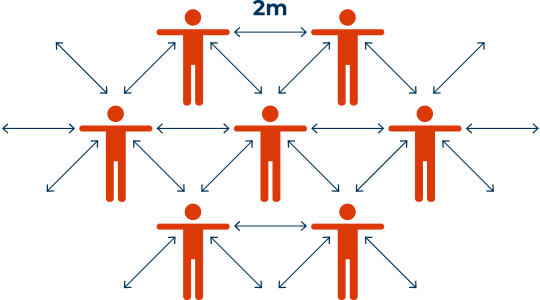“I worry we’re only reaching
the worried well”
Business continuity plans were tested and stretched with the announcement of lockdown. Companies have had to adapt and transition in a matter of days, something that would normally take years. And there are still significant challenges ahead for a hybrid workforce, split between the home and office.
Jack Roper, Head of Employee Comms and Engagement at Legal & General, talks to us about what’s on his mind as he navigates the next phase of the pandemic.

The Challenge of a Polarised Workforce
Every business will have a different approach to responding to a crisis like we are experiencing today. But it is likely that no matter what the approach, there will be a polarisation of the workforce. This poses an additional challenge.
A core group, working on the crisis and shaping the response will be busy and probably acutely stressed. Whilst others, who are less involved will find that their day-to-day has fundamentally changed. Jack highlights the risk that those people, who have lost their daily drive and human contact will feel disconnected from their purpose and struggle to find meaning.
“This polarisation means you now have two challenges: helping people who are acutely stressed and helping people who are struggling to find
meaning and purpose for themselves.”
“I worry that we’re reaching the worried well, which is why I think that a more interventionist approach may be necessary: helping people become more aware of what they might need and making sure they know where to go to get it.”
Jack Roper - Head of Employee Comms and Engagement at Legal and General Group
Mental Wellbeing in the ‘Virtual’ Office
People look out for each other in the office. Human contact and personal relationships make it easier to identify when someone might be struggling. But in the absence of physical, human connection it’s more challenging. Jack highlighted this as one of the biggest unanswered challenges. He believes that supporting mental health and wellbeing will need to be much more explicit. Businesses will have to take a more interventionist approach, proactively connecting with individuals on a regular basis.
This can be supported by offering effective tools and resources to employees; already there are a variety of different apps out there. But it’s not as simple as that. Prior to lockdown Legal & General introduced a workplace mental wellbeing app for all their employees to access - very good timing in the face of the pandemic. However, driving uptake is the challenge, it’s not always easy to get people who need it most to use it.
The Future of Work
“It’s important not to waste a good crisis”
The current crisis has given companies an opportunity to think differently. People are constantly talking about the new normal, and now is the chance to really shape what it looks like. It’s bigger than just day to day operations, it’s a time to think about really big concepts.
“What does the future of work look like when you can’t occupy offices in the way you once did? What will our offices look, feel and be like after lockdown, and what does that mean for how people engage with the business? And maybe most importantly, what does the culture need to look like to underpin it?”
These really big concepts are entangled, and in Jack’s words it’s a “big knotty complex question”. Solving it will require headspace, time for reflection and slow thinking.
“Fortunately, not having a commute, having fewer of the distractions that came with the ‘old normal’ can make that kind of slow, reflective thinking possible – if you’re able to create space and time.”
Today, more than ever, it’s important to create that space and time to come up with creative solutions. Solutions that will work for the organisation as a whole as well as employees as individuals as we adapt a new normal.
